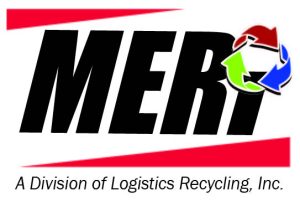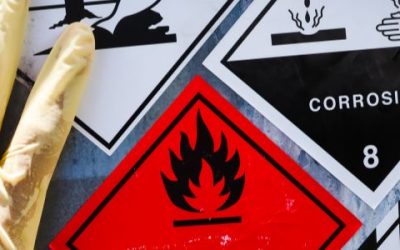Pharmaceutical Waste. That is what is causing an increasing amount of fish and aquatic life to become “feminized” or sterile. Excess amounts of pharmaceutical products going into the sewer system. However, that is just one of many mistakes companies make when disposing of pharmaceutical waste.
Dumping pharmaceutical waste is bad for the environment. It’s bad for people too. Recent studies show that some of these chemicals are beginning to seep into our waterways, contaminating the drinking water for numerous local municipalities.
With so much at stake, the EPA and DOT are dishing out heavy fines to facilities that don’t properly dispose of pharmaceutical waste.
EPA fines for noncompliance can be as high as $10,000 to $25,000 per violation, per day. Plus, for some there is also jail time. Additionally, if your company breaks any pharmaceutical waste transportation rules, the DOT can fine you up to $15,000 per violation.
Don’t put your company or the environment at risk. Avoid these 10 pharmaceutical waste disposal mistakes.
Top 10 Pharmaceutical Waste Disposal Mistakes
The following are 10 common pharma mistakes we see in Wisconsin:
Improper determinations of hazardous waste formulary
Some pharmaceutical waste is more hazardous than others. That’s why the EPA and DOT require you to review each chemical’s formulary and classify it by hazard level.
There are three different levels of categorization for pharmaceutical waste:
- D-List “Characteristic” Waste – These pharmaceuticals have one of the following traits: ignitability, corrosivity, reactivity or toxicity.
- U-List “Toxic” Waste – Most chemotherapy drugs fall into this category.
- P-List “Acutely Hazardous” Waste – This is the most hazardous waste and thus requires the most stringent packaging. This waste includes arsenic trioxide, nicotine, warfarin, physostigmine and epinephrin.
If the EPA or DOT asks, you must prove to them that you’ve reviewed your facility’s pharmaceutical waste formulary. It must be correctly separated and labeled.
It’s especially vital that you separate P-List waste, as the most toxic, from everything else. If this material gets into anything else, all of the waste is then acutely hazardous waste.
2. Incorrect labeling of hazardous waste
All of your company’s pharmaceutical waste containers must have a hazardous waste label on it. The label(s) must be visible on all sides. Remember, P-List items must be collected separately. You must also be able prove to an inspector the amount of P-List waste that you have shipped on a monthly basis.
Additionally, you must label the date that the waste container as it enters the main accumulation storage area. This label must be highly visible.
3. Sewering hazardous waste
You cannot ever sewer hazardous waste. Whether done by accident or on purpose, violators will receive a citation from the EPA. However, if you knowingly dump hazardous waste into the sewer system, you could also face jail time.
4. Improper disposal of chemotherapy drugs
There are two different types of chemotherapy waste. Each requires a specific disposal in Wisconsin.
- Bulk chemo – Bulk chemo is any unused drug and any personal protective equipment that has been spilled on or used to clean up spills. This waste is hazardous and must be stored in a black box.
- Trace chemo – Trace chemo are empty containers and personal protective equipment that has been worn but not spilled on. Trace chemo sharps must be stored in a hard sided container. All other trace chemo must be placed in a yellow container or bag labeled “Trace Chemo.”
5. Inadequate training for employees in hazardous waste
Every employee who may come into contact with, dispense or deliver pharmaceutical waste must go through training on proper disposal. This includes physicians, nurses, laboratory technicians, pharmacy, ancillary, support staff and IT support staff.
Only some of the employees need to go through the full eight-hour training session. However, everyone must understand the proper disposal and transportation methods. There are eight different presentations, that focus on employees’ function-specific responsibilities concerning waste disposal.
Most training classes will train employees on specific aspects of CFR 49 – 172.704. This is the DOT’s comprehensive procedure dictating correct disposal and transportation of pharmaceutical waste. No matter the training, documentation must take place of every session.
6. Not conducting proper weekly inspections of hazardous waste storage
Every week, an employee must inspect hazardous material containers to ensure they are in good shape. The inspection must be well documented, including the initials of the person who did the inspection well as the date of the inspection.
Often times, especially in medical facilities, an employee is already responsible for inspecting other things like fire extinguishers, eye washers and fire doors. If no one is inspecting the hazardous containers right now, it may be a good idea to also add this task to the list as a standard routine.
7. No or inadequate hazardous material manifests
If you ship or destroy pharmaceutical waste, take note. The EPA will ask for every manifest showing what you did. They will require a return copy of the manifest showing when the material was picked up, where it was transported, and that it’s been properly destroyed.
8. Lack of emergency contingency plans
Every facility must have a written emergency response plan in case of an emergency, like a chemical spill.
9. Improper management of expired pharmaceuticals
The EPA needs to know how you’re managing your expired pharmaceutical products. To do this, you must fill out a DEA 222 form. This form allows you to document your process. It includes who you use as a reverse distributor as well as when and where they pick up these products.
10. Improper storage of pharmaceutical waste
Depending on the quantity and type, you can only store pharmaceutical waste for so long. Here’s the breakdown:
Conditionally Exempt Small Quantity (CESQ)
Facilities in this category can store waste indefinitely. It includes facilities that generate less than 220 lbs. of waste per month, and don’t exceed 2,200 lbs. per year.
Of that amount, a facility cannot generate more than 2.2 lbs. of P-list acutely toxic waste per month. If they do, that facility must automatically adhere to the large quantity generator guidelines.
- Small Quantity Generator – Pharmaceutical waste generators in this category can store their waste for no more than 180 days. It includes facilities who generate no more than 2,200 lbs. per month, with an annual maximum of 6,600 lbs. Similar to CESQ generators, a facility cannot generate more than 2.2 lbs. of P-List acutely toxic waste per month. If they do, that facility must automatically adhere to the large quantity generator guidelines.
- Large Quantity Generator – If a facility exceeds the qualifications for a small quantity generator or generates more than 2.2 lbs of P-List acutely toxic waste per month, they are automatically considered a large quantity generator. Facilities that fall under this category can store an unlimited amount of waste, including acutely toxic waste, for up to 90 days.
Improper disposal of pharmaceutical waste can devastate the environment and harm our health. It’s why the EPA and DOT are giving huge fines for violators. Also, possibly jail time. Avoid these 10 pharmaceutical mistakes to keep your company on track. Most importantly, make our world a healthier, safer place.




